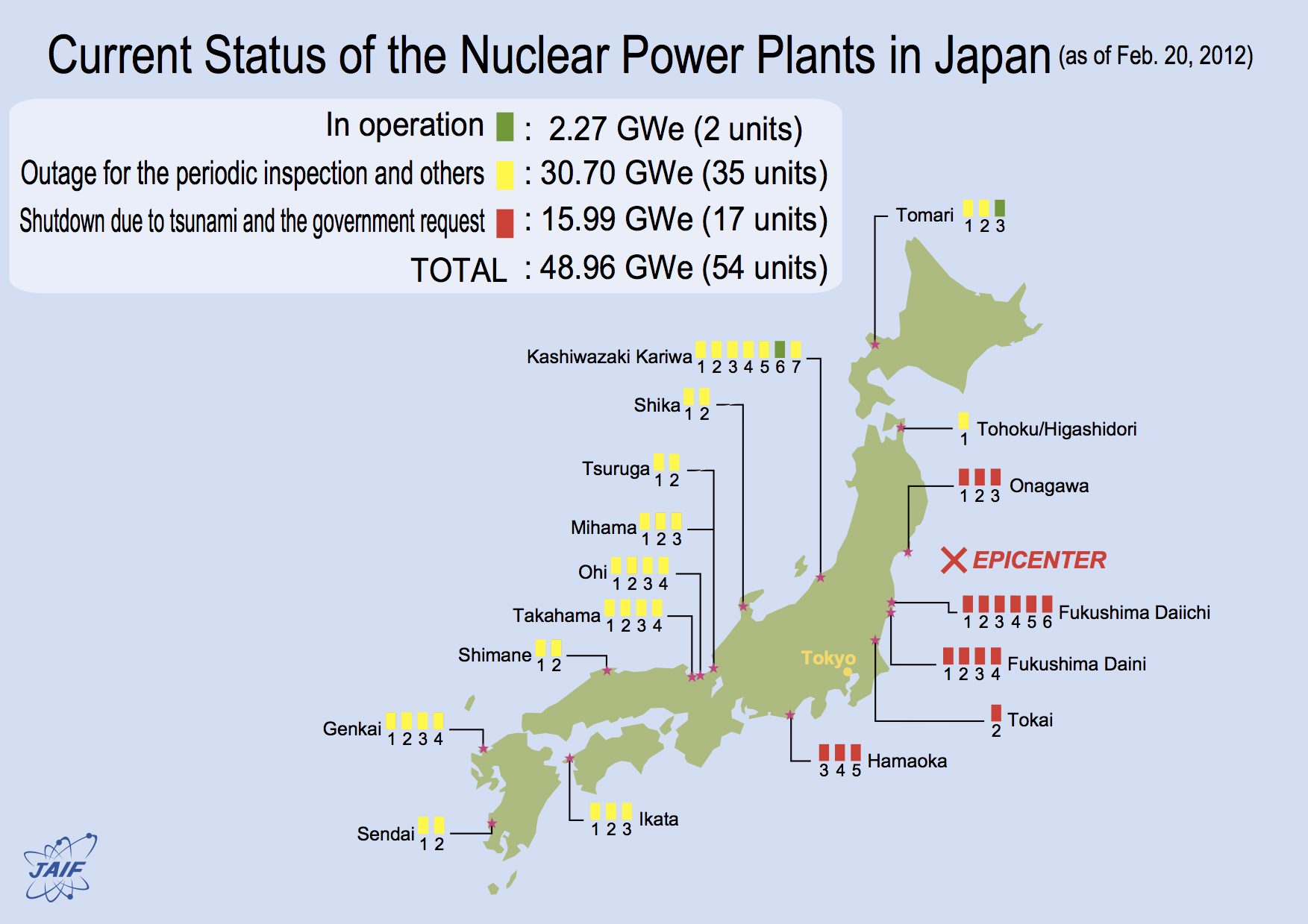Japan turned off all forty eight of its nuclear reactors after the Fukushima disaster in March 2011. These reactors generated thirty percent of Japan's power. Since then there have been investigations and studies to understand why the disaster happened and how to prevent such an event from happening in the future. All the existing nuclear power plants in Japan have been studied with respect to risk. The Abe government is still dedicated to making nuclear technology the centerpiece of Japan's expansion of foreign trade. They also believe that nuclear power is the solution to Japan's energy needs.
There are currently forty two operable nuclear reactors in Japan. Nine of these will probably never be turned back on due to their inability to meet the new safety standards. Even if the utilities that own reactors make modifications to meet the new standards, there is apparently no guarantee that they will be permitted to restart. There is confusion and conflict between the Japanese courts and regulatory agencies. Two reactors that had been clear for restart by the Japan Nuclear Authority have been blocked by courts from restarting. The first of these to be turned back on is at Sendai.
Here is the list of the reactors in Japan and notes on their potential return to commercial operations. (Source is the Nuclear Street website.)
"Sendai 1 is restarted; Sendai 2 is likely to receive NRA approval this year.
Ikata 3 in Shikoku: Likely to be approved by regulators. It is viewed as having local support for a restart.
Genkai 3 and 4 in Kyushu: Moving forward with applications for restart. Has some local support.
Tomari 1, 2 and 3 in Hokkaido: Moving forward with applications.
Shiame 2 in Chugoku: odds for restart uncertain; local government is investigating fuel documentation issues.
Takahama 3 and 4, Kansai: Restart viewed as uncertain; utility is appealing court injunction preventing restart.
Ohi 1 through 4, Kansai: Considerable uncertainty due to legal risks Has submitted application for restarts, but courts have interceded. Company appealing court's directive.
Higashidori 1, Tohoku: Application for restart submitted, but the outcome is uncertain due to the proximity to a tectonic fault line.
Kashiwazaki 6 and 7, Tokyo: Odds for restart uncertain due to strong opposition in local government.
Onegawa 1 and 2, Tohoku: No application for restart on Unit 1, fate of Unit 2 unclear – it was damaged during the Great East Japan Earthquake of March 2011.
Tokai Daini, Japco: Approval for restart uncertain due to age of plant.
Takahama 1 and 2, Kansai: Also uncertain due to age of Unit 1 and strident regulatory response to Unit 2.
Hamaoka 3, 4 and 5, Chubu: Has applied for restart of Unit 3, but outcome is uncertain. Facility is close to a major tectonic fault line. Unit 5 suffered sever flooding of saltwater during March 2011 events.
Shika 2, Hokuriku: Hurdles for restart include local fault lines and local opposition.
Kashiwazaki 1 – 5, Tokyo: Unit 3 not approved for restart. Legal challenges beset restarts of other units. Unit 4 damaged by July 2007 earthquake event.
Mihama 3, Hokuriku: Close to decommissioning age.
Genkai 2, Kyushu: Upgrades viewed as too costly for restart attempt.
Ikata 1 and 2, Shikoku: Up against age limitations and cost issues.
Shika 1, Hokuriku: Has local opposition and sits close to a problematic fault line.
Tsuruga 3, Japco: Has local opposition and sits close to a problematic fault line.
Fukushima Plants – Daiichi and Daini, Tokyo: Very unlikely due to severe damage and very strong local opposition."
Attempts to reform the Japanese nuclear industry have failed in the past. If major changes are not made to the way nuclear power is regulated in Japan, the odds of another major nuclear accident are great. If and when such an accident occurs, it will be much harder if not impossible to turn the Japanese nuclear power reactors back on after they are shut down.
